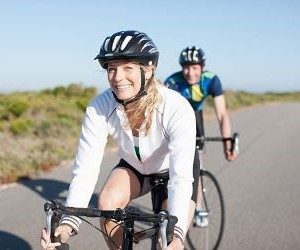WHAT ARE THE BEST GADGETS FOR TRIATHLON CYCLISTS?
Triathlon is not only about endurance—it’s a battle of efficiency, strategy, and smart use of technology. For cyclists in triathlon, the right gadgets can mean the difference between finishing strong or burning out early. From aerodynamic helmets to advanced power meters, wearable tech, and smart hydration tools, the market offers a flood of innovations. But which ones actually matter? In this guide, we’ll explore the best gadgets for triathlon cyclists, breaking down how each device improves speed, comfort, and data-driven decision-making. Whether you’re a first-time Ironman participant or a seasoned pro, these recommendations will help you maximize your training and racing performance.

Essential cycling tech for triathletes
The modern triathlete faces more data, gear, and tech choices than ever before. Gadgets are no longer gimmicks; they’re critical performance tools that help optimize cadence, track effort, and manage power output. Knowing what to invest in can make training smarter and racing faster.
Power meters: the must-have tool
Power meters have revolutionized triathlon cycling. Unlike heart rate monitors, they deliver real-time wattage output, providing precise feedback on effort. Athletes can avoid burning out by pacing properly across distances, from sprint triathlons to full Ironman events. Popular models like Garmin Vector 3 or Favero Assioma pedals integrate seamlessly with training apps.
Track actual workload instead of guesswork
Optimize pacing for long-distance events
Integrates with Zwift, TrainingPeaks, and Strava
Smart bike computers
Bike computers, such as the Wahoo Elemnt Bolt and Garmin Edge series, are no longer just GPS devices. They offer navigation, customizable data screens, and real-time feedback on cadence, heart rate, and nutrition reminders. For triathletes, this means less guesswork and more focus on maintaining a consistent race strategy.
These devices often integrate with external sensors, creating a personalized cockpit of data that’s easy to read at high speeds. With aero mounts, they don’t compromise wind resistance either.
Aerodynamic helmets and sensors
Aerodynamics is free speed. Helmets like the Giro Aerohead or Specialized S-Works TT cut drag significantly. Pairing them with aero sensors like the Notio Konect can help quantify how position tweaks impact real-world performance. The ability to experiment with drag reduction in training can translate to big time gains on race day.
Improves aerodynamic efficiency
Works in harmony with power data
Reduces neck strain with ergonomic design
Wearable and health gadgets
Triathletes live by numbers—heart rate, recovery times, sleep quality, hydration levels. Wearable tech has advanced beyond step counters to provide deep physiological insights. These tools support both training adaptation and race execution.
Smartwatches with multisport features
Watches like the Garmin Forerunner 955 or Coros Vertix 2 are built for triathletes. They switch seamlessly between swim, bike, and run modes, ensuring uninterrupted tracking. Advanced models also offer VO2 max estimates, recovery guidance, and real-time stamina metrics, helping athletes plan fueling and pacing strategies.
Multisport mode for triathlon transitions
Advanced training readiness metrics
Navigation features for unfamiliar routes
Heart rate and recovery monitors
Chest strap monitors like Polar H10 remain the gold standard for accuracy, but optical wrist sensors are improving. Meanwhile, tools like WHOOP bands and Oura rings focus on recovery. They analyze HRV (heart rate variability), sleep cycles, and strain levels, offering actionable feedback on when to push hard or scale back.
This is invaluable for triathletes balancing high training volumes with recovery needs. By identifying overtraining risks, these gadgets help prevent burnout.
Hydration and fueling systems
Hydration sensors like Nix Biosensors measure sweat composition and sodium loss. When combined with smart bottles, athletes can adapt fueling strategies in real time. In endurance events, precision hydration can prevent cramps, bonking, and late-race fatigue.
Personalized hydration recommendations
Real-time electrolyte tracking
Data syncing with training apps
Training and recovery tools
The race is won long before the starting gun. Training and recovery gadgets determine how well a triathlete adapts to load. Innovations in indoor cycling, sleep tech, and recovery devices are reshaping preparation methods.
Smart trainers and virtual platforms
Indoor training is no longer monotonous. Smart trainers like Wahoo Kickr and Tacx Neo simulate gradients, road feel, and resistance shifts. Pair them with Zwift or Rouvy, and athletes can race virtual courses or replicate upcoming triathlon routes. This provides targeted preparation while avoiding outdoor risks.
Realistic simulation of race conditions
Structured interval training options
Integration with power and cadence sensors
Compression and massage technology
Recovery boots from brands like Normatec and Hyperice use pneumatic compression to flush out lactate and improve circulation. Handheld massage guns, such as Theragun, target sore muscles with percussive therapy. These tools accelerate recovery, allowing athletes to train consistently without accumulating fatigue.
For triathletes juggling long weeks of training, these devices reduce downtime and optimize adaptation to stress loads.
Sleep and stress monitoring devices
Sleep is the cheapest recovery tool, but often the most overlooked. Devices like Oura Ring or Garmin’s sleep tracking platforms quantify sleep stages, recovery rates, and nighttime HRV. Athletes who refine sleep quality gain performance benefits without additional training stress.
Sleep staging and REM analysis
Daily recovery readiness scoring
Long-term trend tracking for stress management
Incorporating this data ensures that triathletes don’t just train hard, but also train smart, maintaining peak condition across long seasons.






